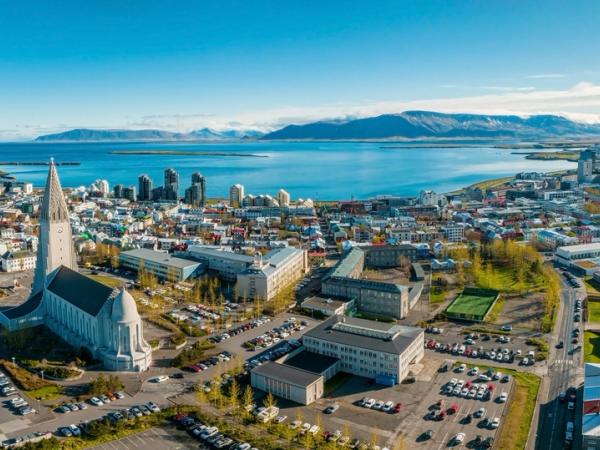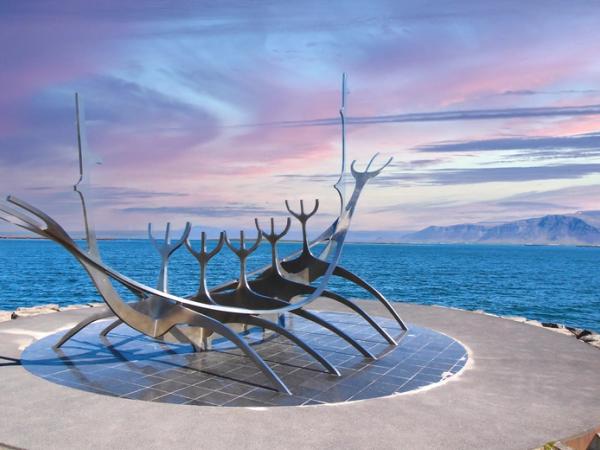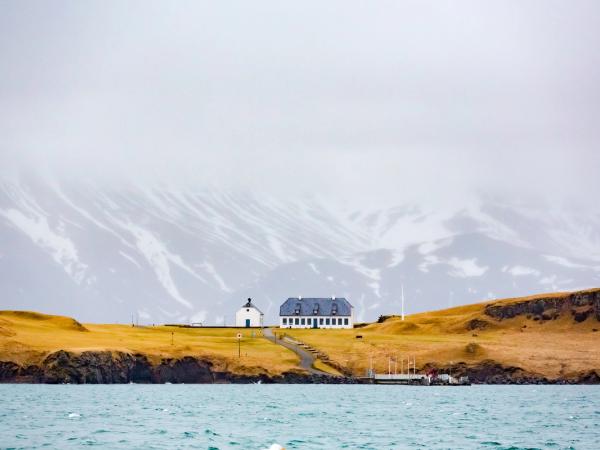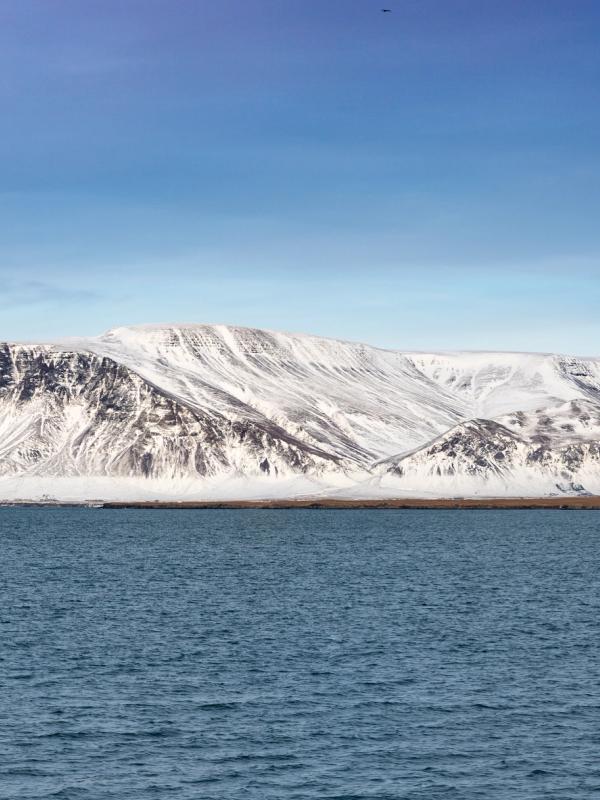
Exploring Faxaflói Bay: Iceland's Majestic Marine Wonder
Iceland's largest bay sits just west of Reykjavík, offering some of the country's most spectacular views and wildlife encounters. Faxaflói Bay stretches between two dramatic peninsulas, creating a natural playground for whales, puffins, and adventure-seeking travelers.
Whether you're planning to spot humpbacks breaching in the distance or want to explore Viking history on ancient islands, Faxaflói Bay delivers experiences you won't find anywhere else in Iceland.
Key Takeaways
- Faxaflói Bay is Iceland's largest bay, spanning 50 miles between the Reykjanes and Snæfellsnes Peninsulas
- The bay is a hotspot for marine life, with frequent sightings of minke whales, humpback whales, and Atlantic puffins
- Viðey Island offers cultural attractions, including the Imagine Peace Tower and "Milestones" sculpture
- Best visited May-September for wildlife or October-March for northern lights and the Imagine Peace Tower
- The bay provides a stunning backdrop to Reykjavík, with Mount Esja creating a picturesque skyline
What’s Faxaflói Bay? Geography and Setting
Faxaflói Bay dominates the southwestern coast of Iceland, creating a large indentation that stretches about 50 miles (80 km) between the Reykjanes and Snæfellsnes Peninsulas. The bay cuts into the coast, extending approximately 30 miles (50 km) inland.
From Reykjavík's harbor, the views across the water are clear. On good days, you can spot the Akranes Peninsula to the northeast and even catch a glimpse of the Snæfellsjökull glacier, a glacier featured in Jules Verne's "Journey to the Center of the Earth", about 120 km away.
Several islands dot the waters of Faxaflói, each with its own character. Viðey is the largest and most visited, while Lundey ("Puffin Island") and Akurey host thousands of nesting Atlantic puffins during the summer months. The smaller island of Engey completes the group visible from shore.
The bay includes two main fjords worth exploring. Hvalfjörður, or "Whale Fjord," served as a naval base during World War II and now supports fishing operations. Borgar Fjord extends further inland, offering dramatic landscapes. The waters throughout the bay remain between 35 and 37 meters deep, with a sandy bottom that is mixed with volcanic basalt.
The bay creates a natural backdrop for photos. Mount Esja rises behind Reykjavík, framing the capital against the water. This setting becomes even more striking during the summer's Midnight Sun, when golden light covers the landscape, or on winter evenings when the Northern Lights appear above the bay.
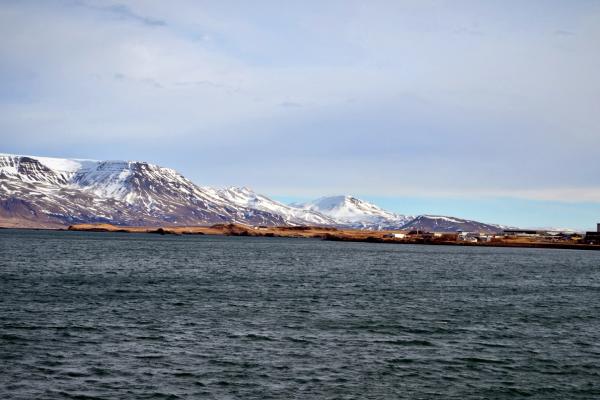
History and Culture
Faxaflói Bay has shaped Iceland's growth since the first settlers arrived. Viking ships once crossed these waters, starting settlements along the coast that would later grow into fishing villages and towns. The bay provided food and travel routes for early Icelanders.
Viðey Island keeps much of this cultural heritage. Home to Iceland's oldest stone church and historic settlements dating back to the 10th century, the island offers a unique glimpse into the past. The island later became the resting place of Icelandic author Gunnar Gunnarsson and now hosts art installations, including Yoko Ono's Imagine Peace Tower and Richard Serra's "Milestones" sculpture.
The fishing industry changed life around Faxaflói. For centuries, small rowing boats launched from the shores to fish the rich waters. Today, larger commercial vessels continue this tradition, though tourism has become an equally important part of the economy.
This mix of old heritage and modern life gives Faxaflói its distinct character. From Reykjavík's Old Harbour, where traditional fishing boats dock alongside whale-watching vessels, to the modern architecture of Harpa Concert Hall overlooking the water, the bay connects Iceland's past and future.
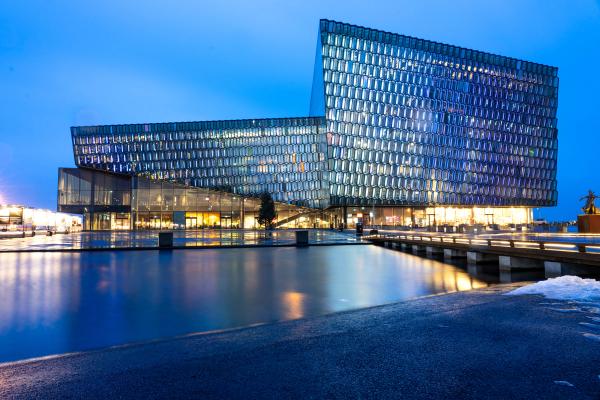
Whale Watching in Faxaflói Bay
Whale watching is the bay's most popular activity. The nutrient-rich waters create perfect feeding grounds for various whale species, making Faxaflói one of Europe's best whale-watching destinations.
Tour boats operate year-round from Reykjavík's Old Harbour, with the highest success rates during the summer months (May through September). During peak season, you'll likely spot minke whales, the most common species in the bay. These creatures often approach boats, providing good viewing opportunities.
Humpback whales visit the bay from April through October, showing off with breaching displays and tail slaps. These large whales can reach lengths of up to 16 meters, yet they move with remarkable agility and grace. White-beaked dolphins and harbor porpoises stay in the bay year-round, often traveling in groups that swim in the wake of boats.
If you’re lucky, you might also see orcas (killer whales) or even blue whales, especially during spring migrations. For the best chances of seeing multiple species, book a tour during the morning hours when waters are typically calmer and marine life is more active.
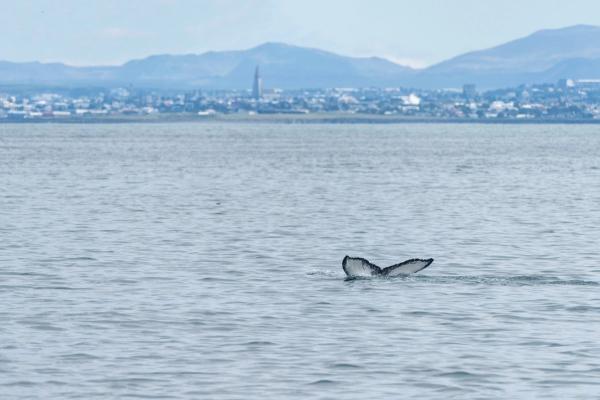
Tours & Prices
Most tours last 3-4 hours and include warm clothes and seasickness tablets if needed. Prices typically range from 10,000 to 15,000 ISK (approximately $70-$110) for adults, with lower prices for children. Companies like Elding and Special Tours have good reputations for responsible wildlife viewing practices and knowledgeable guides.
For photos, bring a camera with a zoom lens, though even smartphones can take decent shots when whales surface nearby. Dressing in layers is essential, regardless of the season, as water temperatures are typically several degrees cooler than those on land.
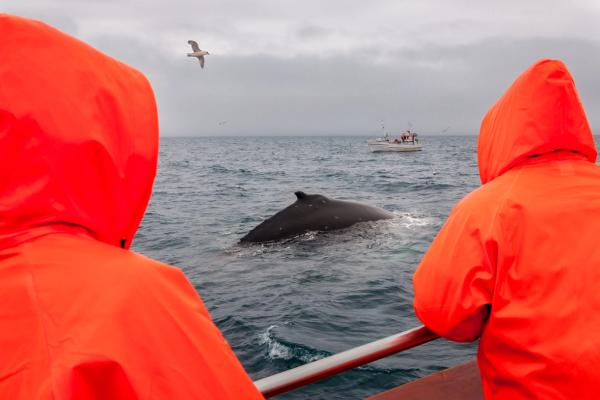
Other Things to Do at Faxaflói Bay
Beyond whale watching, Faxaflói Bay offers many activities that showcase its natural beauty and cultural significance.
Puffin Watching Tours
Atlantic puffins nest by the thousands on Lundey and Akurey islands from May through August. These seabirds, with their colorful beaks and awkward flying style, appeal to visitors of all ages. Puffin tours typically last about an hour and cost around 6,000-8,000 ISK ($45-60). Some whale-watching companies offer combined whale and puffin watching experiences for those wanting to see more wildlife in one trip.
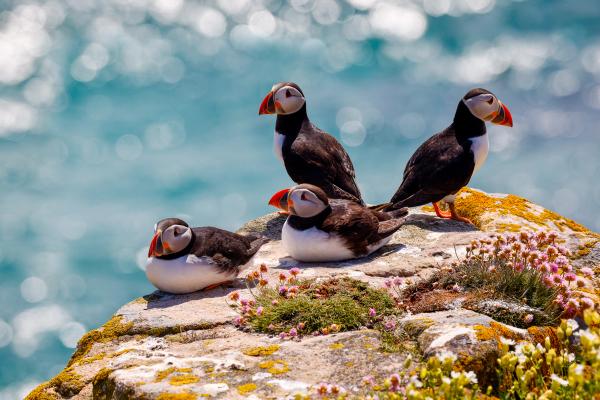
Visit Viðey Island
Accessible by ferry from Reykjavík's Old Harbour or Skarfabakki terminal, Viðey Island offers a quiet retreat from the city. The island features walking trails, historic buildings, and significant art installations.
The Imagine Peace Tower, created by Yoko Ono in memory of John Lennon, sends a beam of light skyward from October 9 (Lennon's birthday) to December 8 (the anniversary of his death), as well as on other selected dates. The tower bears the words "Imagine Peace" in 24 languages, sharing Ono's message of harmony.
Richard Serra's "Milestones" features a permanent installation: nine pairs of basalt columns arranged along a path, creating a link between art and landscape. The island also houses Iceland's oldest church and Viðeyjarstofa, a cafe and gallery showing Icelandic art.
Ferry tickets cost approximately 1,500 ISK ($11) round-trip, with service operating year-round (though schedules vary by season). The Reykjavík City Card includes ferry access, making it a cost-effective option for visitors.
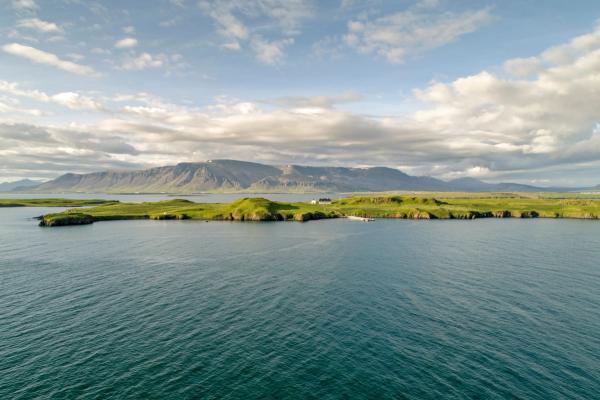
Kayaking Adventures
For those wanting a closer connection with the bay, kayaking tours provide a memorable experience. Paddling along the coastline offers unique views of Reykjavík's skyline and provides opportunities to approach wildlife without the noise of an engine. Tours typically last 2-3 hours and cost 12,000-16,000 ISK ($90-$ 120), including all necessary equipment and instruction.
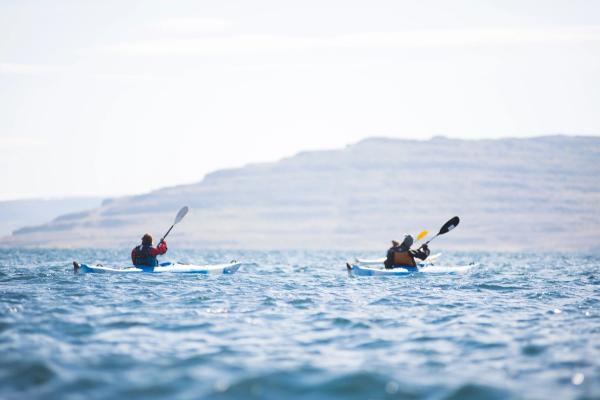
Coastal Cycling to Grótta Lighthouse
Rent a bicycle in downtown Reykjavík and follow the 5 km coastal path to Grótta Lighthouse on the Seltjarnarnes Peninsula. This 15-20 minute ride offers nice views of the bay, Mount Esja, and (on clear days) the Snæfellsjökull glacier. The lighthouse area offers excellent bird-watching spots and is a popular destination for viewing the Northern Lights during the winter months.
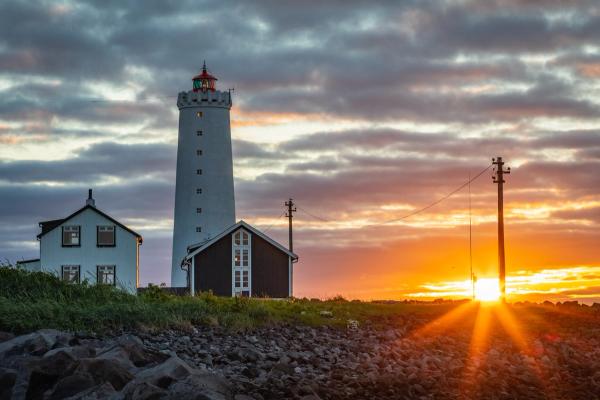
Northern Lights Cruises
Winter visitors can view the aurora borealis from the water. Northern lights cruises depart from the bay, away from the city's lights, improving viewing chances. These tours typically run from September through April, cost around 9,000-12,000 ISK ($65-$ 90), and include hot drinks and warm clothing. The open water offers clear views of the lights reflected on its surface, providing a truly special experience.
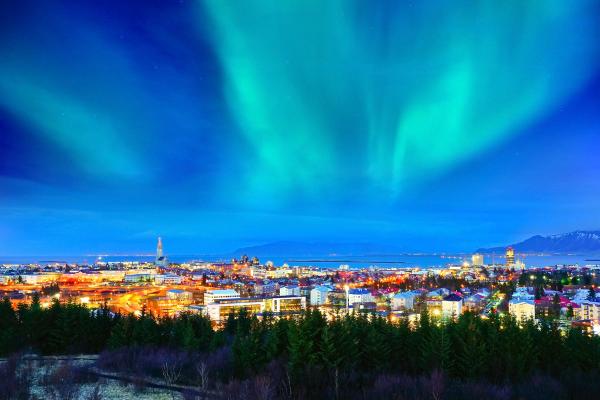
Sea Angling
Experience Iceland's fishing tradition with a sea angling tour. These trips provide the necessary equipment and guidance for catching cod, haddock, and other local fish species. Many tours offer the option to cook your catch onboard or take it to a nearby restaurant for preparation. Prices average $140 for 3-hour trips.
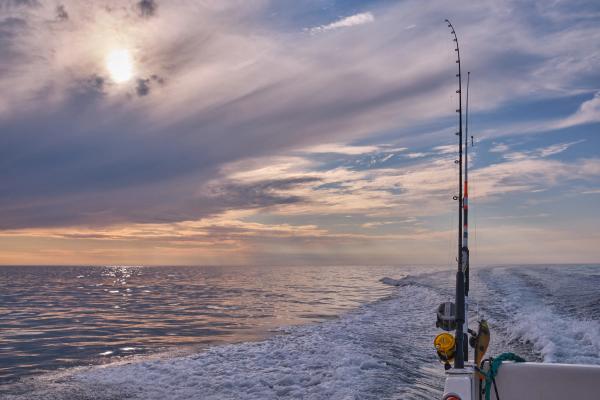
New Year's Eve Cruises
See Reykjavík's New Year's celebrations from the water. Special cruises offer wide views of the city's impressive fireworks display, with champagne and traditional Icelandic New Year's treats. These one-time events sell out quickly, so book your spot months in advance.
Practical Tips for Visiting Faxaflói Bay
Here's some information to make sure you make the most of your visit to Faxaflói.
Best Time to Visit
Faxaflói Bay offers different experiences throughout the year:
- Summer (May-September): Best for wildlife viewing, with 24-hour daylight around the solstice allowing for Midnight Sun tours. Temperatures range from 10 °C to 15°C (50°F to 59°F).
- Winter (October-March): Ideal for viewing the Northern Lights and experiencing the Imagine Peace Tower. Shorter daylight hours (4-6 hours in December) and temperatures between -2 and 5°C (28-41°F) require proper clothing.
- Shoulder seasons (April and October): Offer fewer crowds and lower prices, though weather can change quickly.
Getting There
Accessing Faxaflói Bay from central Reykjavík is simple:
- Walking: A 30-40 minute walk from Harpa Concert Hall takes you to the Old Harbour, where most boat tours depart.
- Cycling: Rent bikes from many city locations for a 15-20 minute ride to coastal areas like Grótta Lighthouse.
- Public Transport: Several bus routes connect downtown to harbor areas, with single rides costing 670 ISK ($5.50).
- Ferry Services: Boats to Viðey Island depart from either the Old Harbour or Skarfabakki terminal, depending on the season.
What to Bring
- Layered clothing: Weather changes quickly, so dress in multiple thin layers rather than one heavy coat.
- Waterproof outer gear: Needed for boat trips in all seasons.
- Binoculars: Help with wildlife viewing.
- Camera with zoom lens: Good for capturing distant wildlife.
- Reykjavík City Card: Includes Viðey Island ferry access and public transport.
- Seasickness medication: Take about 30 minutes before boat tours if you get motion sickness.
Photography Tips
The central bay between Sandgerði and Akranes offers the most marine life for wildlife photography. Early morning light creates good conditions for landscape shots featuring Mount Esja. For Northern Lights photography, bring a tripod and camera with manual settings; smartphones have improved, but still struggle with aurora photos.
Sustainability
Choose eco-certified tour operators that follow responsible wildlife viewing guidelines. These companies maintain a proper distance from animals, limit engine noise, and contribute to conservation research.
When visiting islands and coastal areas, stay on marked paths to protect plants and nesting sites. Take all trash with you and avoid disturbing wildlife, particularly during breeding seasons.
Conclusion
Faxaflói Bay showcases Iceland's unique appeal, a place where nature and culture converge, creating experiences found nowhere else. From witnessing a humpback whale jump against the backdrop of Mount Esja to appreciating the quiet of Viðey Island's art installations, the bay offers numerous opportunities for connection and discovery.

